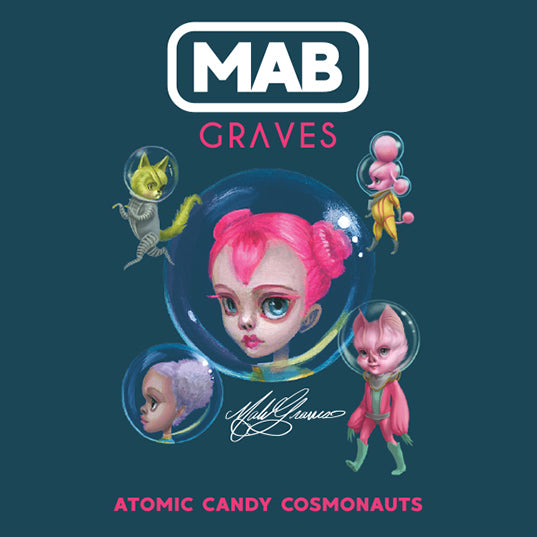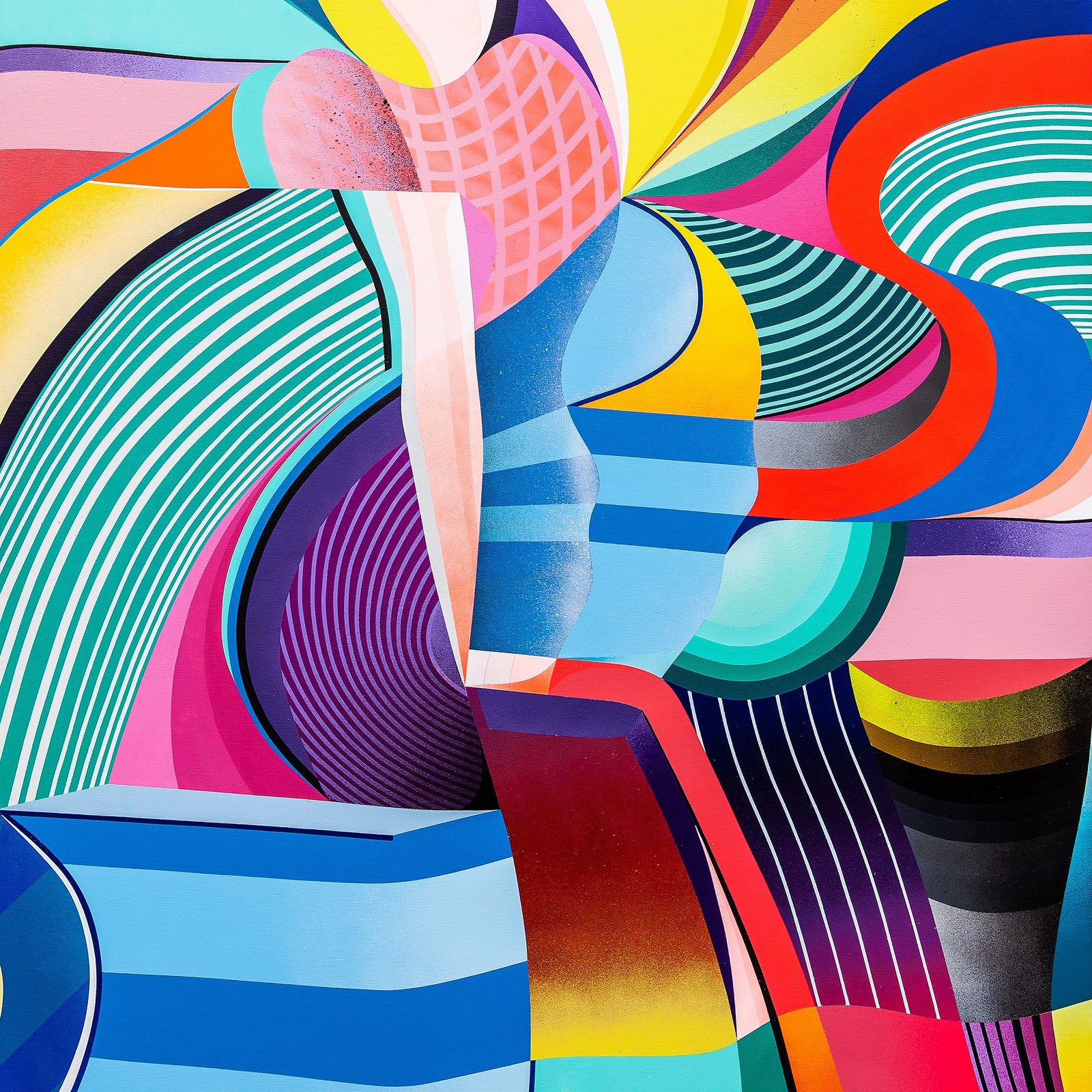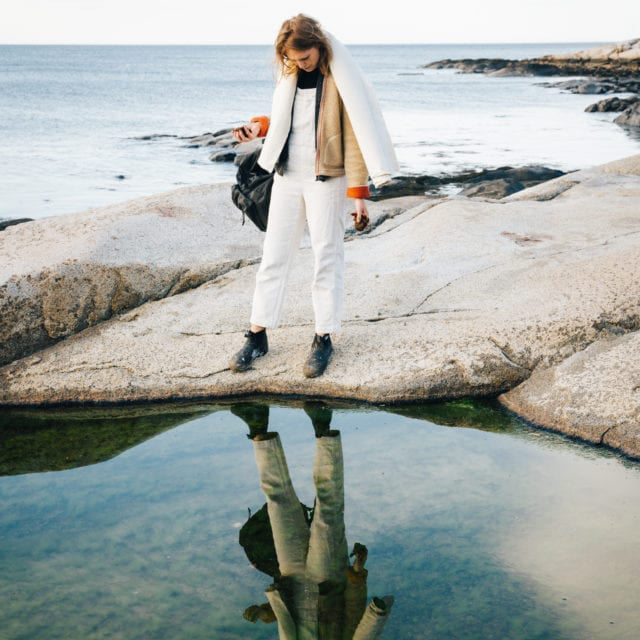Abstract Artist Morgan Dyer Uses Nature as Her Canvas

“Real Women, Real Work” is a Darling series about everyday women who work in various fields including business, entertainment, science and education. We want to get to know the WHY behind their WHAT and get an inside look into different industries.
Morgan Dyer is an abstract artist who is one with nature. You can find her creating her latest masterpiece outside with the birds, the dirt and the worms. With Mother Nature as her canvas, literally, Dyer’s process may seem unconventional to some. She allows paint to take the shape of the ground with each pour. Puddles form along the earth’s divots as streams flow and connect to fill them. Using her brush or finger, Dyer controls what shape she can and allows nature to do the rest.
Whether she is working in a cottage in the northern coastal region of Massachusetts or the beach in sunny Malibu, California, the landscape inspires the themes of her work. When the “safer at home” ordinance was issued at the onset of the pandemic, Dyer packed up her supplies at her studio to create from home. Today, she predominantly uses acrylics, but her artwork has expanded to include various types of paint—inks, watercolor inks, fabric dye and oil, as well as diverse medium such as performance and photography. She uses color, texture and form to convey emotions and the connection between humans and nature.
Darling got to chat with Dyer about her career journey and how she has stayed inspired to create throughout the quarantine.
How long have you been painting?
I began painting as an undergrad at Montserrat College of Art. In 2011, it was clear that paint was the medium I wanted to commit to and seek a deeper relationship with. This came after a mini-breakthrough in a color theory class in my junior year. I’ve been primarily painting with acrylics ever since. My painting is beginning to touch upon new mediums like photography, murals and performance.
What inspired you to start?
A combination of moments in my early life inspired me and led me to make art. I was very close to my grandmother. She was an incredible source of information and a long-time supporter of the arts in our community. She encouraged my curiosity at a young age.
Throughout my childhood these expressions of art surrounded me. I learned how to stretch and form a canvas in high school. I remember the light that went off in my brain during my very first time drawing a figure with charcoal. Being sensitive to human experience was not necessarily a unique gift, but I think it allowed me to be a sponge to my own experiences and gain inspiration from just about everything.
Being sensitive to human experience allowed me to be a sponge and gain inspiration from just about everything.
My family struggled with addiction and alcohol abuse. These moments with my grandmother were safe, warm and fulfilling. It was important for me to be a part of the art scene at a young age because of this. I’m lucky to have had people to foster my curiosity.
As an undergrad, I struggled with what material and message I wanted to carry with me out of college. A professor of mine, Rose Olsen, helped me believe in my gifts for color and composition. She taught me to note and remember moments that made sense to me while mixing my paint. I took her color theory class three times. That was the point I knew painting would be my lifelong challenge.

How would you describe your style of art?
My painting style is abstract and expressive. It’s meant to convey feeling and emotion through color, texture and form. I focus on visualizing and painting a feeling in relation to a landscape or moment in time. Layers of paint, from thick to diluted transparencies, reveal evidence of the process.
My painting style is meant to convey feeling and emotion through color, texture and form.
I’m inspired by color field painters and action painters from the 1940s to the 1960s who used spontaneous paint and slow process applications. Sometimes, a single piece can take a year or more to finish. The spontaneous action of pouring paint while working on the ground communicates the contours of the land, as well as the performance of my body. Both of these ideas of painting have led me to my own rituals—a creative process that evolves and changes depending on my own emotional landscape.
What is your creative process?
My process begins by laying a blank canvas to the ground and mixing large cups of color. By adding water and acrylic mediums to each color, I create a range of transparencies. I pour the color onto the canvas and guide the pools of color with my fingers and brushes into shapes that have most captured my attention in nature—like small tide pools, the spaces and crevices where two rock formations meet, saltwater marks on rocks and foam build up from a stream. Images can allude to intersections of rock, dried-up puddles or shapes of a boulder. The process can be a frantic dance as I try to control the watery lines, and at other times, it’s softer and controlled by slow movements.
Aside from my studio, I have been working at home since COVID-19 swept Massachusetts. This has given my paintings an exciting new narrative because I have been working on unstructured canvas and painting on the land itself, which rids any boundary to the creation of the piece. The earth or rock under the canvas dictates the shapes rather than an even ground on my studio floor where I would have more control over the paint.
This process demands the input of nature. I leave some paintings out in the rain and allow buds from sprouting trees dry into the puddles and pools of paint. Mud forms to the canvas and bugs leave their trails. I protect the land by using tarps/heavy plastic and have recently begun to use pigments from nature to integrate with my use of paint.

For someone interested in painting, what practical tips can you give them on how to begin?
Challenge yourself and your ideas. Before you start a project, steer clear of the internal voices that tell you that your ideas are too far fetched or crazy. Lean into a subject that inspires you. Don’t be overly concerned with it being good or bad. Who are you harming with a bad piece of art anyway? We can deprive ourselves of the joy of making with a false sense of expectation. It’s important to not let that voice win.
We can deprive ourselves of the joy of making with a false sense of expectation.
Buy some primary colors, a palette knife and a surface to mix paint on (like palette paper or wax paper). One fear that I’ve struggled with in starting something new is this false need to know everything about a subject before I begin exploring it. What I find helpful in eliminating this fear is to spend a lot of time getting to know your paint and materials. Spend time getting to know your tools—mixing colors together or familiarizing yourself with how a palette knife feels in your hand.
What can beginner painters use for inspiration to paint?
You can always start with the place you live. Inspiration can come from anywhere. Don’t underestimate your local library or local bookshop. They can provide loads of information on what might be happening in galleries in surrounding areas, not to mention the entire library of stories provided on artists and painters you could bring home in the same trip!
Go see an exhibition you’re excited about in another city. Take a museum tour. Investigate what makes you excited, even if it doesn’t scream “art.” Connect with artists who inspire you and ask them what inspires them.
I get a lot of inspiration from the conversations I have with my close family and friends. Most of these conversations end up with us discussing childhood experiences and traumas, embarrassing moments and the things that make us human. These connections to my loved ones always feel productive and provide mountains of inspiration for me to continue my own work.

What are the must-have supplies/tools to get started?
Start with a sketchbook. Sketchbooks are portable and easy to travel with. Combine it with your favorite pen, and it can be a place to hold memories, color combinations you found interesting, a pressed flower or be a closed book to your inner thoughts. There is no correct formula to get started and everyone absorbs and creates differently, but a sketchbook is always a good place to start.
If you’re curious about painting, then do your best to try it without taking it too seriously. There are many ways to apply paint other than with a brush. Thinking outside the box from the start can loosen the structures you may have built around painting. Watercolor, gouache, acrylic and oil paints are a few materials to consider.
How has art impacted you personally?
Art has always felt like a gift that has allowed me to deepen my relationship with myself and my practice in life. It has been one of my life’s great challenges. Art has affected every relationship I’ve ever built, and it’s been a mirror to myself. It has allowed me to experience radiant moments, as well as terrible ones. The highs and lows can be extraordinary, but it’s never boring. Without the arts in my life, I don’t know where I’d be. I cannot imagine a life without creating.
I cannot imagine a life without creating.
What is your hope for the impact your artwork will have on other people?
I hope that people find an emotional connection to my work. I value human connection and conversation. I want my work to start a conversation about our relationship to our environment and our place within it. I’m interested in exploring the roots and nuance of people and places.
I want my painting techniques and the mystery that they evoke when people see my work to start a conversation about the methods I use. I’m also told that the way I paint makes people want to paint. I find that interesting since it’s a non-traditional technique, but that means they are connecting—hopefully to themselves, others and their environment.

What advice would you give your younger self?
Break the rules. I was a willful and loud child. As I grew up, I began hiding that version of myself to make a good impression. I spent too much effort trying to be perfect and was afraid to make mistakes. I wish I had given myself permission to follow my gut, say the wrong thing so I could learn from it and have a better relationship to rejection so I could think of failure in a productive way. I live for mistakes now. That’s where much of the “magic” in my work comes from.
Be kind to yourself. Forgive yourself. It’s essential to the process of personal development and growth. Being kind to myself during that process is a constant struggle and isn’t something that comes easy. Yet, putting in the work is always more appealing to me than pushing it aside. My goal isn’t to feel like I’m coasting with no pain. It’s to lean into the pain, love the pain and embrace that part of myself along the journey.














